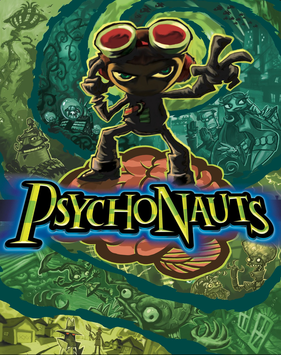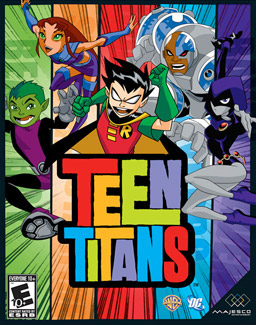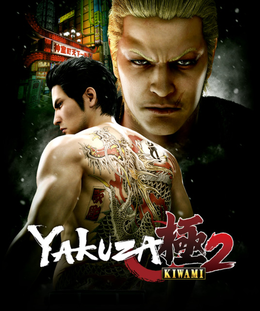
Max Payne is a 2001 third-person shooter game developed by Remedy Entertainment. It was originally released for Windows by Gathering of Developers in July 2001, and was later ported by Rockstar Games to the PlayStation 2 and Xbox in December 2001, and by MacSoft and Feral Interactive to Mac OS X in July 2002. A version of the game for the Game Boy Advance, featuring an isometric perspective but retaining most of the original's gameplay elements, was released by Rockstar in December 2003, and an enhanced port for mobile devices was published in 2012 to coincide with the release of Rockstar's Max Payne 3. A Dreamcast version of the game was also planned, but was canceled due to the discontinuation of the console in 2001. Max Payne was also made available on Xbox 360 as part of Xbox Originals program in 2009, on PlayStation 3 as a PS2 Classic in 2012, on PlayStation 4 in 2016, and on Xbox One and Xbox Series X/S in 2021, due to the consoles' respective backward compatibility and emulation features.

Indiana Jones and the Emperor's Tomb is a 2003 action-adventure video game developed by The Collective and published by LucasArts for the Xbox, Microsoft Windows, PlayStation 2 and OS X. It features cover art by Drew Struzan. The game is an adventure of fictional archeologist Indiana Jones. The story takes place in 1935, acting as a prequel to Indiana Jones and the Temple of Doom. The tomb mentioned in the title is that of China's first Emperor Qin Shi Huang.

Psychonauts is a 2005 platform video game developed by Double Fine Productions and published by Majesco Entertainment for Microsoft Windows, Xbox and PlayStation 2.

Jade Empire is an action role-playing game developed by BioWare, originally published by Microsoft Game Studios in 2005 as an Xbox exclusive. It was later ported to Microsoft Windows personal computers (PC) and published by 2K in 2007. Later ports to macOS (2008) and mobile platforms (2016) were handled respectively by TransGaming and Aspyr. Set in a world inspired by Chinese mythology, players control the last surviving Spirit Monk on a quest to save their tutor Master Li and defeat the dark forces behind his kidnapping. The Spirit Monk is guided through a linear narrative, completing quests and engaging in action-based combat. With morality-based dialogue choices during conversations, the player can impact both story and gameplay progression in various ways.

Doom 3: Resurrection of Evil is a survival horror first-person shooter video game developed by Nerve Software and published by Activision. It was released for Microsoft Windows worldwide on April 4, 2005, as an expansion pack and sequel to Doom 3 and on October 5, 2005, for the Xbox video game console. The Xbox version does not require the original Doom 3 in order to play, and includes The Ultimate Doom, Doom II: Hell on Earth and Master Levels for Doom II.

Advent Rising is an action-adventure third-person shooter video game developed by GlyphX Games and published by Majesco Entertainment. The game was released on May 31, 2005, for Xbox and on August 9, 2005, for Microsoft Windows. Its story was created by Donald and Geremy Mustard and featured a script written by science fiction writers Orson Scott Card and Cameron Dayton; the full orchestral soundtrack was done by Tommy Tallarico and Emmanuel Fratianni. As of September 14, 2006, Steam began offering Advent Rising for download.

Forgotten Realms: Demon Stone is an action role-playing video game released in 2004 for PlayStation 2, Xbox and Microsoft Windows. It is set in the Forgotten Realms campaign setting for Dungeons & Dragons (D&D). The story was written by R.A. Salvatore and features the voices of Patrick Stewart as Khelben "Blackstaff" Arunsun and Michael Clarke Duncan as Ygorl.

Battle Realms is a real-time strategy video game published and released by Crave Entertainment and Ubi Soft in November 2001. It was the first game created by Liquid Entertainment. An expansion pack Battle Realms: Winter of the Wolf was released in November 2002. In 2012, the game was re-released on GOG.com. In 2019, the game was re-released on Steam as Battle Realms: Zen Edition, in its early access state with functioning online multiplayer.

Otogi: Myth of Demons, is a 2002 action video game developed by FromSoftware and published by Sega. It was released for the Xbox in Japan in December 2002, by Sega in North America in August 2003, and Europe in September 2003. Otogi follows former executioner Raikoh Minamoto as he attempts to purge the demons that have overrun Japan and restore the Great Seal that kept them at bay. It received positive reviews and was followed by a sequel, Otogi 2: Immortal Warriors, in 2003.

Jaws Unleashed is a 2006 action-adventure video game inspired by the 1975 film Jaws. It was developed by Appaloosa Interactive and published by Majesco Entertainment. This game features open world gameplay, with the player assuming control of a large great white shark and being able to roam freely throughout the water, eating other animals and humans, while destroying everything in its path. Jaws Unleashed was released for Microsoft Windows, Xbox and PlayStation 2.

Teen Titans is an action beat 'em up video game released in 2006 for the GameCube, PlayStation 2, and Xbox. A game under the same name was released for the Game Boy Advance on October 16, 2005. They were developed by Artificial Mind and Movement and published by THQ in conjunction with Majesco Entertainment. The game is themed after the 2003 Cartoon Network TV series Teen Titans, and most of the original voice actors reprise their respective roles.

Dragons of a Fallen Sun is a fantasy novel by American writers Margaret Weis and Tracy Hickman. It is the first novel published in The War of Souls trilogy and part of the large Dragonlance series.

Dragon Age: Origins – Awakening is the expansion for the role-playing video game Dragon Age: Origins. Awakening adds a new campaign that takes place during the aftermath of Dragon Age: Origins. The game features new class specializations and skills for the player to develop. Awakening was released for Microsoft Windows, OS X, PlayStation 3 and Xbox 360 on March 16, 2010, in North America, March 18 in Europe, and March 19 in the United Kingdom. It was released for the Mac on August 31, 2010.

The Elder Scrolls V: Skyrim – Dawnguard is a downloadable content add-on for the action role-playing open world video game The Elder Scrolls V: Skyrim. It was developed by Bethesda Game Studios and published by Bethesda Softworks. The Xbox 360 version of Dawnguard was launched in English-speaking territories on June 26, 2012, and in France, Germany, Italy, and Spain in mid-July 2012. It was released on Microsoft Windows via Steam on August 2, 2012. Due to performance issues, the PlayStation 3 release of Dawnguard was delayed until February 26, 2013.

Majesco Entertainment Company is an American video game publisher and distributor based in Hazlet, New Jersey. The company was founded as Majesco Sales in Edison, New Jersey in 1986, and was a privately held company until acquiring operation-less company ConnectivCorp in a reverse merger takeover, becoming its subsidiary and thus a public company on December 5, 2003. ConnectivCorp later changed its name to Majesco Holdings Inc. on April 13, 2004.

Assassin's Creed Freedom Cry is an action-adventure video game developed by Ubisoft Quebec and published by Ubisoft. Set in the French colony of Saint-Domingue between 1735 and 1737, Freedom Cry follows Adéwalé, a prominent supporting character from the 2013 title Assassin's Creed IV: Black Flag. While attempting to disrupt Templar activities in the Caribbean Sea on behalf of their rival organization, the Brotherhood of Assassins, Adéwalé finds himself shipwrecked in Saint-Domingue, where he comes face-to-face with some of the most brutal slavery practices in the West Indies.

Yakuza Kiwami 2 is an action-adventure video game developed by Ryu Ga Gotoku Studio and published by Sega. It is a remake of the 2006 video game Yakuza 2 for the PlayStation 2, and is the Like a Dragon series' second remake title following 2016's Yakuza Kiwami. It was developed using the Dragon game engine from Yakuza 6. The game was released for PlayStation 4 on December 7, 2017 in Japan, and worldwide on August 28, 2018. It was released for Windows worldwide on Steam on May 9, 2019 and released for Xbox One on July 30, 2020. A version for cloud-based platform Amazon Luna was released on January 19, 2023.
Dragon Age II is an action role-playing video game developed by BioWare and published by Electronic Arts (EA) for Microsoft Windows, PlayStation 3, Xbox 360 and OS X. It is the second major game in the Dragon Age series and was released worldwide in March 2011. The game features a total of six downloadable content packs that were released from November 2009 to September 2010 on Xbox Live, PlayStation Network, and BioWare's website. Most of these content packs feature new quests and new locations for players to access in the base game, as well as new items for the player to make use of. Two story-focused content packs serve as standalone side stories from the base game, both of which advance the narrative of the Dragon Age series as a whole: Legacy, and Mark of the Assassin.

Samurai Jack: Battle Through Time is an action-adventure video game developed by Soleil Ltd., a then subsidiary studio of the Japanese video game developer Valhalla Game Studios and published by Adult Swim Games. It is based on the American animated television series Samurai Jack. The game serves as an alternative scenario that takes place during the show's series finale in its final season; Genndy Tartakovsky confirmed it to be canon to the series. It was released on August 21, 2020, for iOS and macOS, Nintendo Switch, PlayStation 4, Windows, and Xbox One, and received generally positive reviews from critics.

Assassin's Creed III: The Tyranny of King Washington is a downloadable content (DLC) expansion pack developed and published by Ubisoft for the 2012 action-adventure video game Assassin's Creed III. Set after the events of the base game, it follows its main playable character, Ratonhnhaké:ton / Connor, as he awakens in what appears to be an alternate reality where the game's events involving him have never happened. He is tasked to find and defeat a fictionalized version of George Washington, who is empowered but mentally corrupted by an otherworldly artifact. After crowning himself King of the newly-founded United States of America, Washington began to enslave the population of the American frontier and massacre those who resist his tyranny. Connor gains new mystical abilities over the course of the pack's narrative as he attempts to stop Washington and return to his original timeline.



















